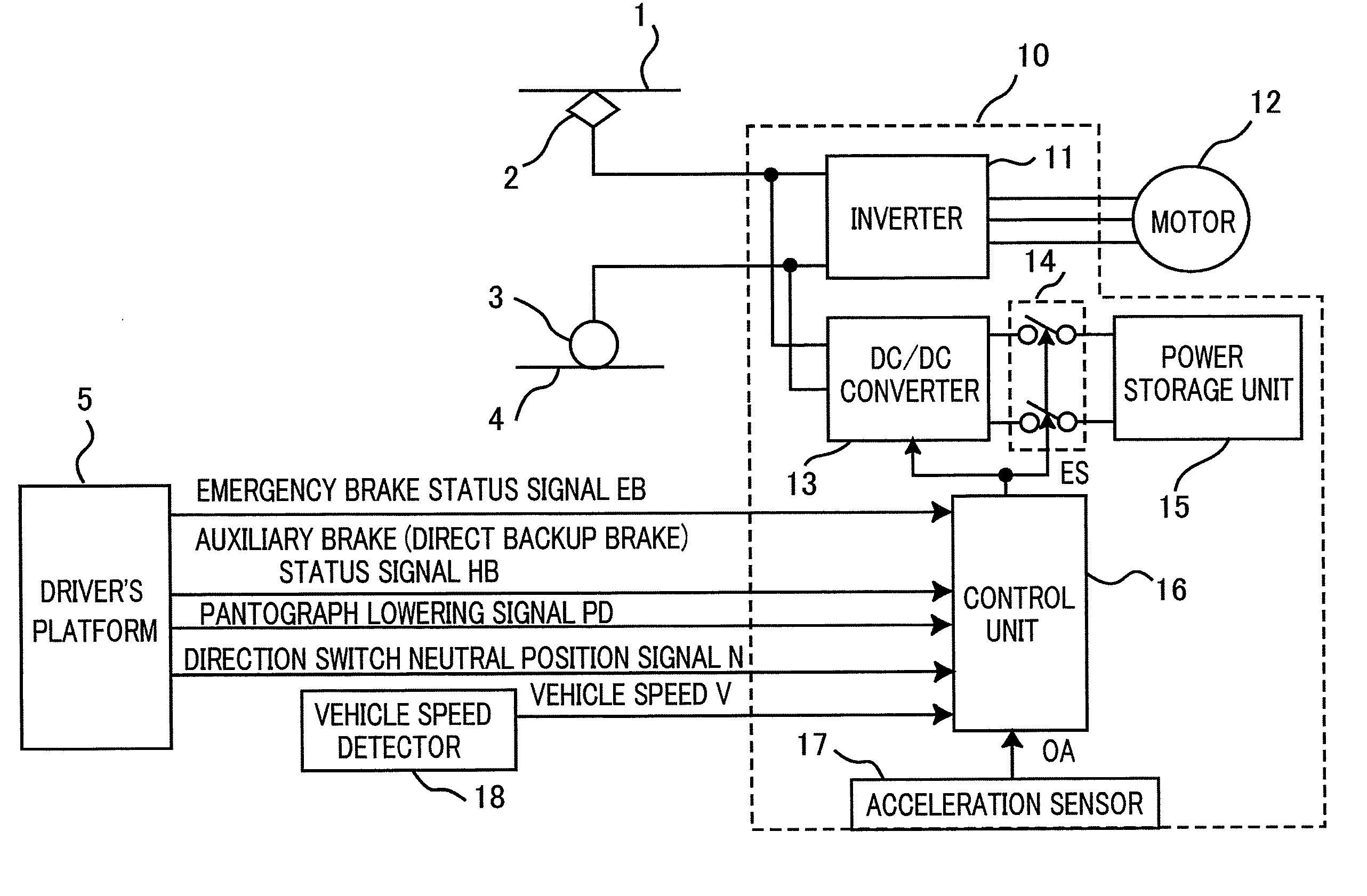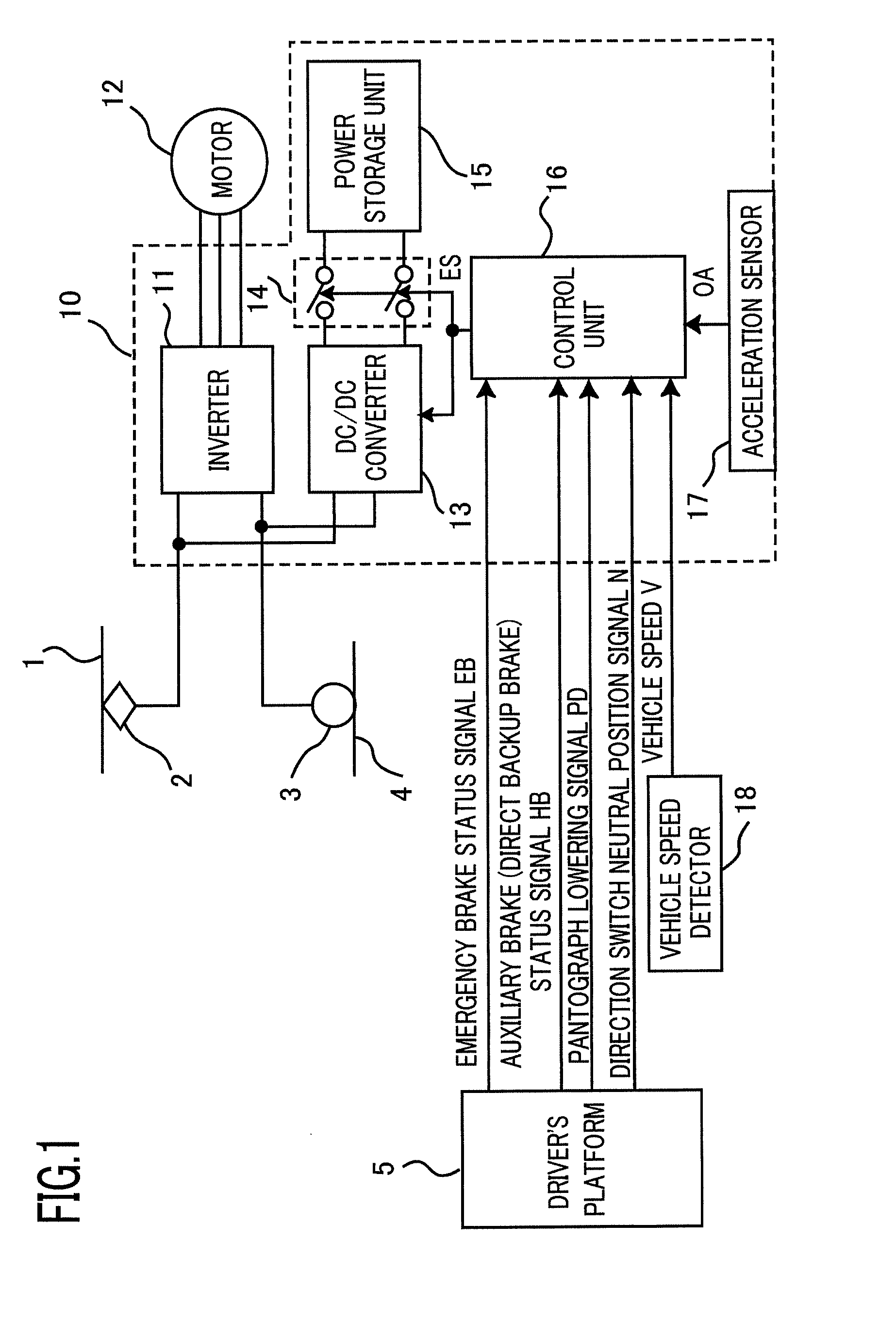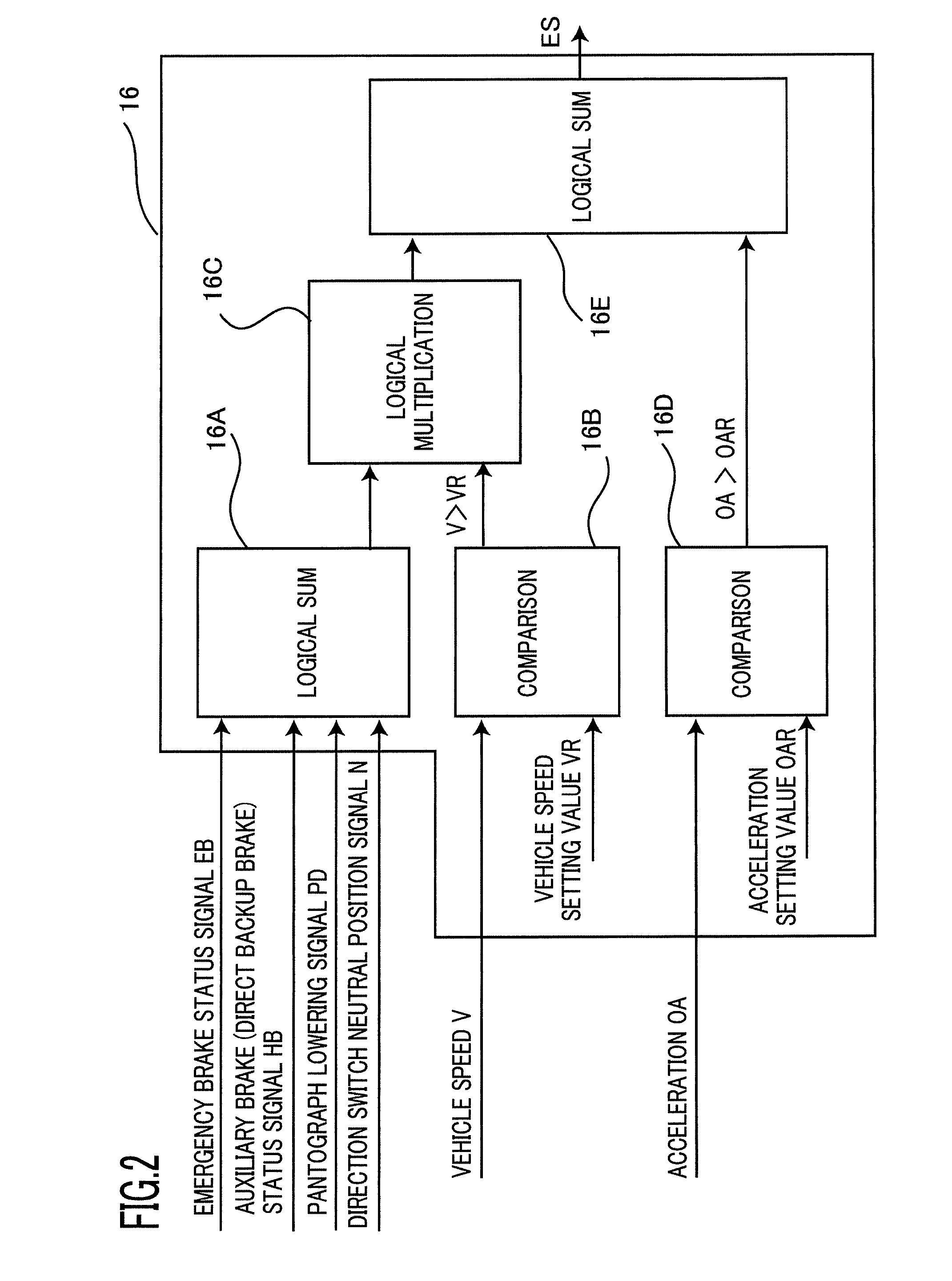Electric-vehicle controller
a technology for electric vehicles and controllers, applied in the direction of electric devices, process and machine control, instruments, etc., can solve the problems of heat or electromagnetic force further destroying the electric-vehicle controllers and electric vehicles, and achieve the effect of preventing heat or electromagnetic for
- Summary
- Abstract
- Description
- Claims
- Application Information
AI Technical Summary
Benefits of technology
Problems solved by technology
Method used
Image
Examples
embodiment 1
[0039]FIG. 1 is a block diagram illustrating an electric-vehicle controller according to Embodiment 1 of the present invention. As illustrated in FIG. 1, an electric-vehicle controller 10 is configured in such a way as to receive DC electric power from an overhead line 1 via a pantograph 2 and a wheel 3. The electric-vehicle controller 10 is configured with an inverter 11 that converts DC electric power (e.g., DC 1500 V) from the overhead line 1 into AC electric power (e.g., variable-voltage, variable-frequency electric power) and supplies the AC electric power to a motor 12; a power storage unit 15 that stores electric power for driving the inverter 11; a DC-to-DC converter 13, for making the power storage unit 15 store and discharge electric power, one terminal pair of which is connected to the DC power source side of the inverter 11 and the other terminal pair of which is connected to the power storage unit 15; a switch 14 connected between the power storage unit 15 and the DC-to...
embodiment 2
[0055]FIG. 3 is a block diagram illustrating an electric-vehicle controller according to Embodiment 2. Constituent elements that differ from those in the block diagram illustrated in FIG. 1 will be explained, and explanations for similar constituent elements will be omitted. In addition, the same reference characters in Figures denote the same or equivalent constituent elements. FIG. 3 illustrates an electric-vehicle controller utilized in an AC electrified section in which AC electric power is supplied to the overhead line 1. A converter 20 for converting the AC electric power in the overhead line 1 into DC electric power is connected to the DC side of the inverter 11. It goes without saying that the present invention is applicable also to such an electric-vehicle controller as configured in the foregoing manner.
[0056]The configuration according to Embodiment 2 can demonstrate an effect that, in the case where abnormal circumstances in which excessive impact is exerted on the elect...
embodiment 3
[0057]FIG. 4 is a block diagram illustrating an electric-vehicle controller according to Embodiment 3. Constituent elements that differ from those in the block diagram illustrated in FIG. 1 will be explained, and explanations for similar constituent elements will be omitted. FIG. 4 illustrates an electric-vehicle controller mounted in a vehicle that travels in a non-electrified section. AC electric power generated by an AC generator 30 that is driven by an internal combustion engine or the like is converted into DC electric power by the converter 20 and supplied to the inverter 11.
[0058]It goes without saying that the present invention is applicable also to such an electric-vehicle controller as configured in the foregoing manner. The configuration according to Embodiment 3 can demonstrate an effect that, in the case where abnormal circumstances in which excessive impact is exerted on the electric-vehicle controller 10 may occur or abnormal circumstances in which excessive impact is...
PUM
 Login to View More
Login to View More Abstract
Description
Claims
Application Information
 Login to View More
Login to View More - R&D
- Intellectual Property
- Life Sciences
- Materials
- Tech Scout
- Unparalleled Data Quality
- Higher Quality Content
- 60% Fewer Hallucinations
Browse by: Latest US Patents, China's latest patents, Technical Efficacy Thesaurus, Application Domain, Technology Topic, Popular Technical Reports.
© 2025 PatSnap. All rights reserved.Legal|Privacy policy|Modern Slavery Act Transparency Statement|Sitemap|About US| Contact US: help@patsnap.com



